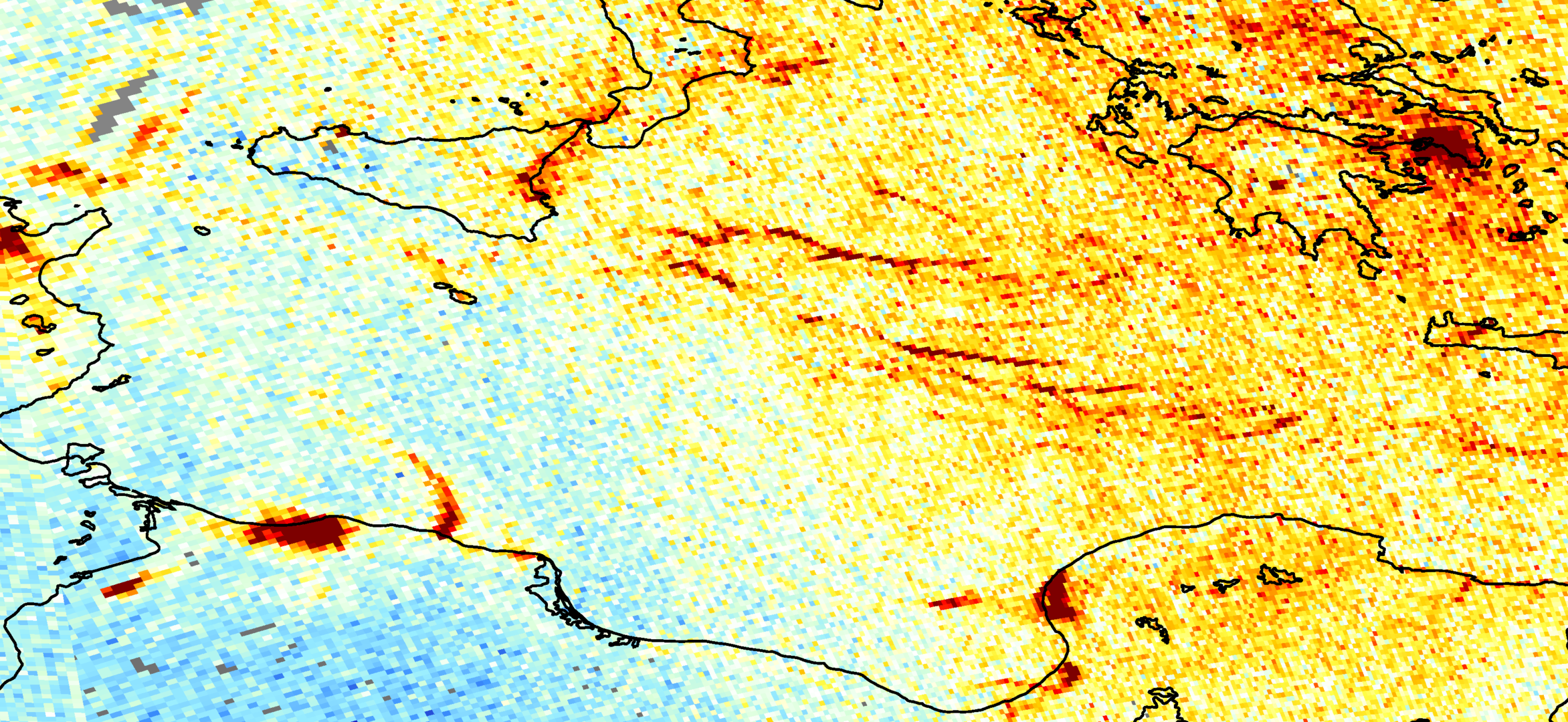Scientists have just exploited the images captured by the Copernicus Sentinel-5P satellite to detect the nitrogen dioxide plumes generated by each ship individually.

contains data modified from Copernicus Sentinel (2018), processed by Georgoulias et al.
It is known that maritime transport has adirect impact on poor air quality of many coastal cities, which permanently receive in their ports both merchant ships and cruise ships whose fuels when burned emit highly polluting by-products. In fact, andprevious study estimated that emissions from shipping are responsible globally for about400 000 premature deaths for lung cancer ycardiovascular diseases y14 million cases of childhood asthma by year.
For this reason, during the last decade, Efforts have been made to developinternational shipping emissions regulations. Since 2020, the maximum content of sulfur dioxide (SO2) of fuels for shipsreduced a 0,5% (compared to 3,5% previously) in an effort to reduce air pollution, protect health and the environment. Nitrogen dioxide emissions are expected (NO2) of maritime transport will also be restricted in the coming years.
Enforcing ships to comply with these regulations remains an unresolved challenge. The open ocean covers vast areas, with limited or no capacity to carry out local controls. This is where the satelliteCopernicus Sentinel-5P could be useful for monitoring vessels remotely.
contains data modified from Copernicus Sentinel (2018), processed by Georgoulias et al.
Links (edit)
